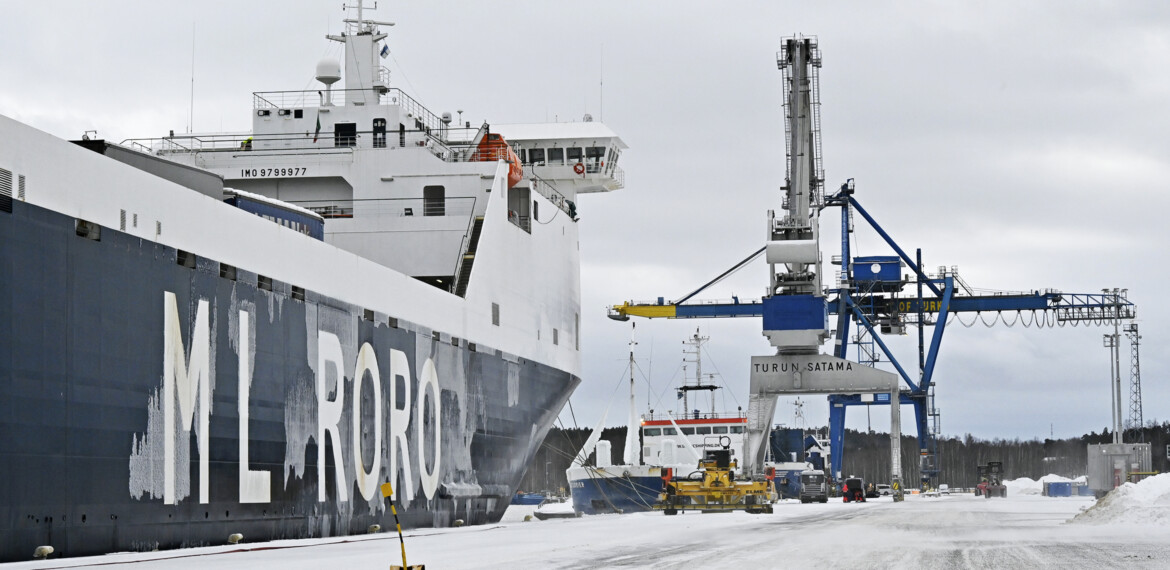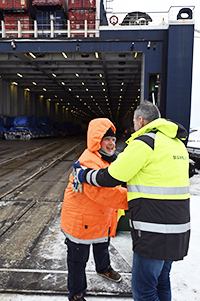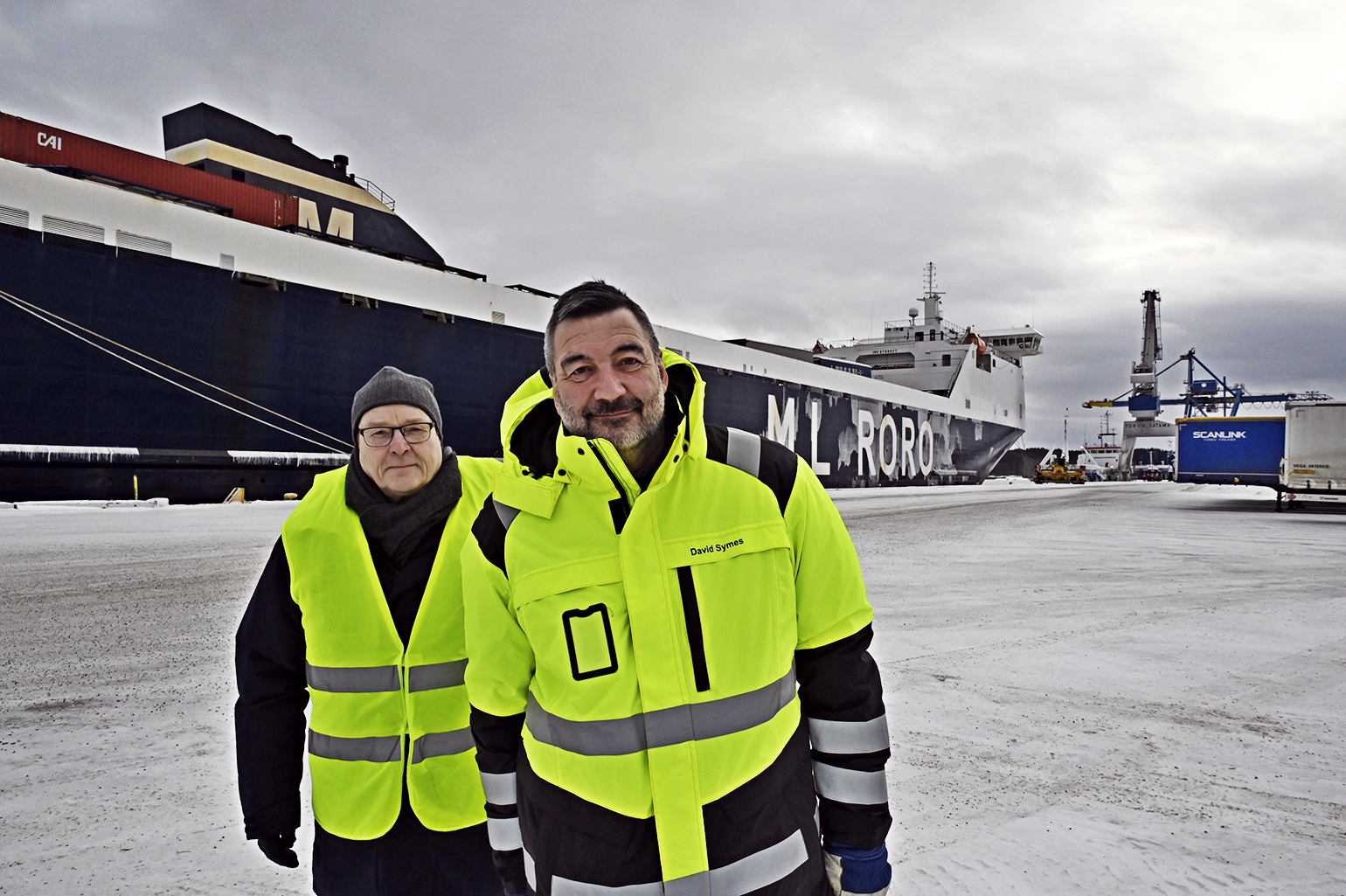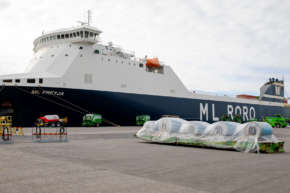New vessel and new General Manager for Mann Lines
David Symes, the recently appointed General Manager of Mann Lines, is expecting a new – longer, more efficient and more ecological – ro-ro vessel for the Turku route.

M/s ML Freya has just arrived in the port and the Italian crew is freezing: in Turku they are faced with frost and ice as well as a rising storm wind. The pilot station on Utö Island interrupted the pilot service temporarily due to poor weather.

The shipping companies operating in the Baltic Sea have also met other kinds of difficulties. Recession, tightening regulation and consequences of Russia’s war of aggression. Uncertainty and insecurity.
“The times are filled with challenges, but we are not sticking our head in the sand”, says David Symes, General Manager of Mann Lines Oy.
On the contrary: a new ro-ro vessel for Mann Lines is currently being built at the Cantieri Navali Visentini shipyard near Venice.
“It will be longer, more efficient and more ecological”, Mr Symes sums up.
New technology
The new ro-ro ship will be a hybrid vessel: in addition to traditional fuel oil it runs on green methanol.
“New technology has been launched in the field. Ship hulls save energy for example by using coatings and air bubble systems which reduce the friction by blowing small bubbles under the vessel”, says Timo Helanto, former General Manager of Mann Lines.
The shipping company has also been thinking about rotor sails, but their durability in practice is a question mark. Shore-side electricity was also considered, but of the six ports on the route of the ro-ro vessel, Turku was the only one that would have been ready to develop the idea to put it into practice.
“Furthermore, shore-side electricity is not really suited to us, as the vessel stays in the port for such a short time. We could not charge enough power, and it’s an expensive investment”, Mr Symes says.
The new vessel chartered to Mann Lines is expected to arrive in the Baltic Sea at the beginning of 2025.
Small size is an advantage, Timo Helanto says.
Small size is an advantage
When Mr Symes’ job title at Mann Lines changed from Operations Director to General Manager, he left the fax number out of his new calling card. Otherwise, Mr Symes continues largely in the footprints of Mr Helanto who retired on pension in December 2023.
“I see to it that the customers get similar services as they did before. I focus on what we are good at, which means e.g. high & heavy goods”, Mr Symes says.
“Flexibility is our trump card. It is easier in Turku than in many other bigger ports. The small size is an advantage. We were able to adjust the closing times in some cases if a shipment was late”, Mr Helanto reminisces.
Mr Symes commends their partner, stevedore company Finnsteve without which it would not be possible to provide such high-quality services.

Modest seamen
There are many similarities between the former and new General Managers of Mann Lines. Both of them are sons of a seaman and both travelled at the sea before choosing Turku, of all the ports in the world, as their place of residence together with their spouses.
“My daughter asked me, why I ended up in this field. I told her that I don’t know much about seafaring, and even less about other fields”, Mr Symes says and chuckles.
Mr Helanto and Mr Symes do not tend to boast, although they have plenty of merits. During their time, the shipping company’s vessel capacity grew, lane metres increased from 1,340 metres to 3,000 metres, and instead of three ports the shipping company now offers connections to six ports: Turku, Bremerhaven, Harwich, Cuxhaven, Rotterdam, and Paldiski.
A shipping company cannot succeed on its own, though. Logistics is a team effort.
“The Port of Turku has great significance to us. When you walk through that port gate, you will never get out”, says Mr Helanto who has made a long career in the port.
Text and photos: Sari Järvinen
Mann Lines’ new vessel
- Key dimensions: 203.4 m x 26.20 m
- Height of main deck: 7.00 m
- Height of lower hold: 4.40 m
- Two separate vehicle decks
- Engine power: 2 x 7200 kW
- Exhaust gas scubber system: Ecospray open loop scrubber



